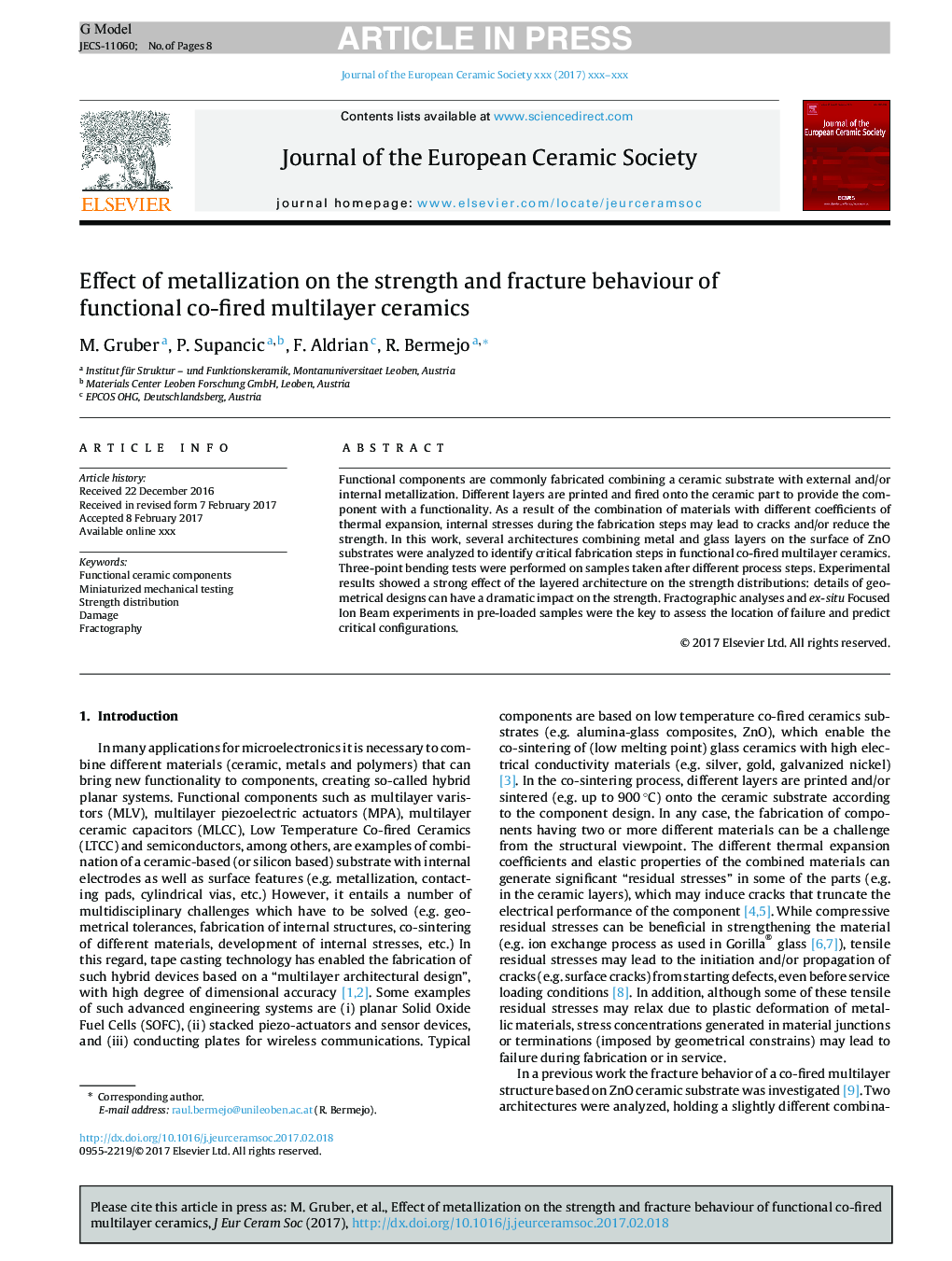| Article ID | Journal | Published Year | Pages | File Type |
|---|---|---|---|---|
| 5440574 | Journal of the European Ceramic Society | 2017 | 8 Pages |
Abstract
Functional components are commonly fabricated combining a ceramic substrate with external and/or internal metallization. Different layers are printed and fired onto the ceramic part to provide the component with a functionality. As a result of the combination of materials with different coefficients of thermal expansion, internal stresses during the fabrication steps may lead to cracks and/or reduce the strength. In this work, several architectures combining metal and glass layers on the surface of ZnO substrates were analyzed to identify critical fabrication steps in functional co-fired multilayer ceramics. Three-point bending tests were performed on samples taken after different process steps. Experimental results showed a strong effect of the layered architecture on the strength distributions: details of geometrical designs can have a dramatic impact on the strength. Fractographic analyses and ex-situ Focused Ion Beam experiments in pre-loaded samples were the key to assess the location of failure and predict critical configurations.
Related Topics
Physical Sciences and Engineering
Materials Science
Ceramics and Composites
Authors
M. Gruber, P. Supancic, F. Aldrian, R. Bermejo,
